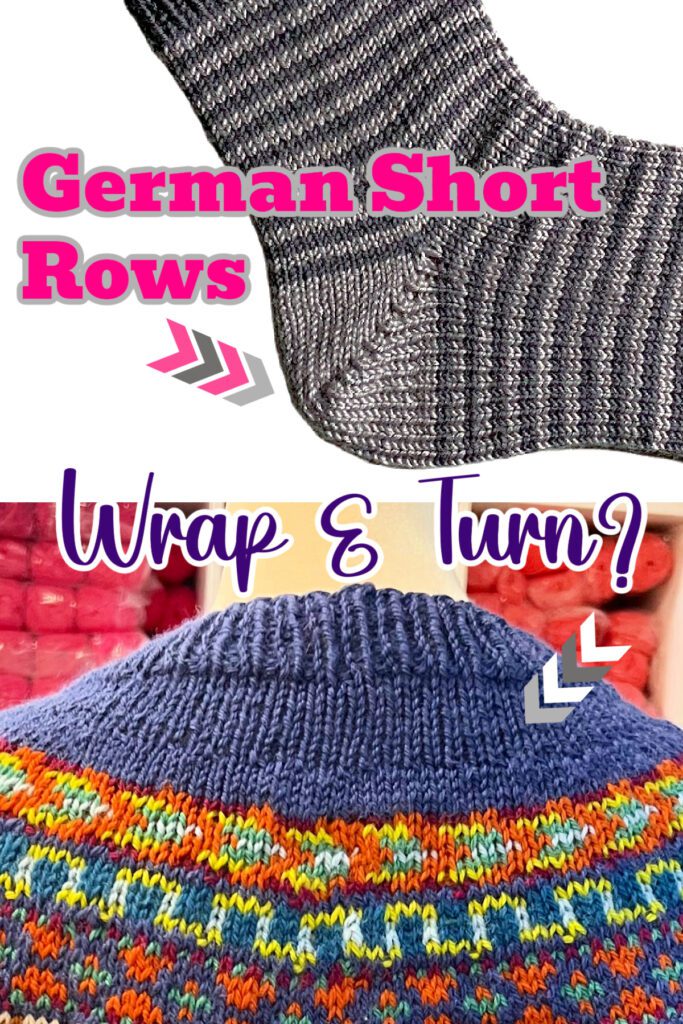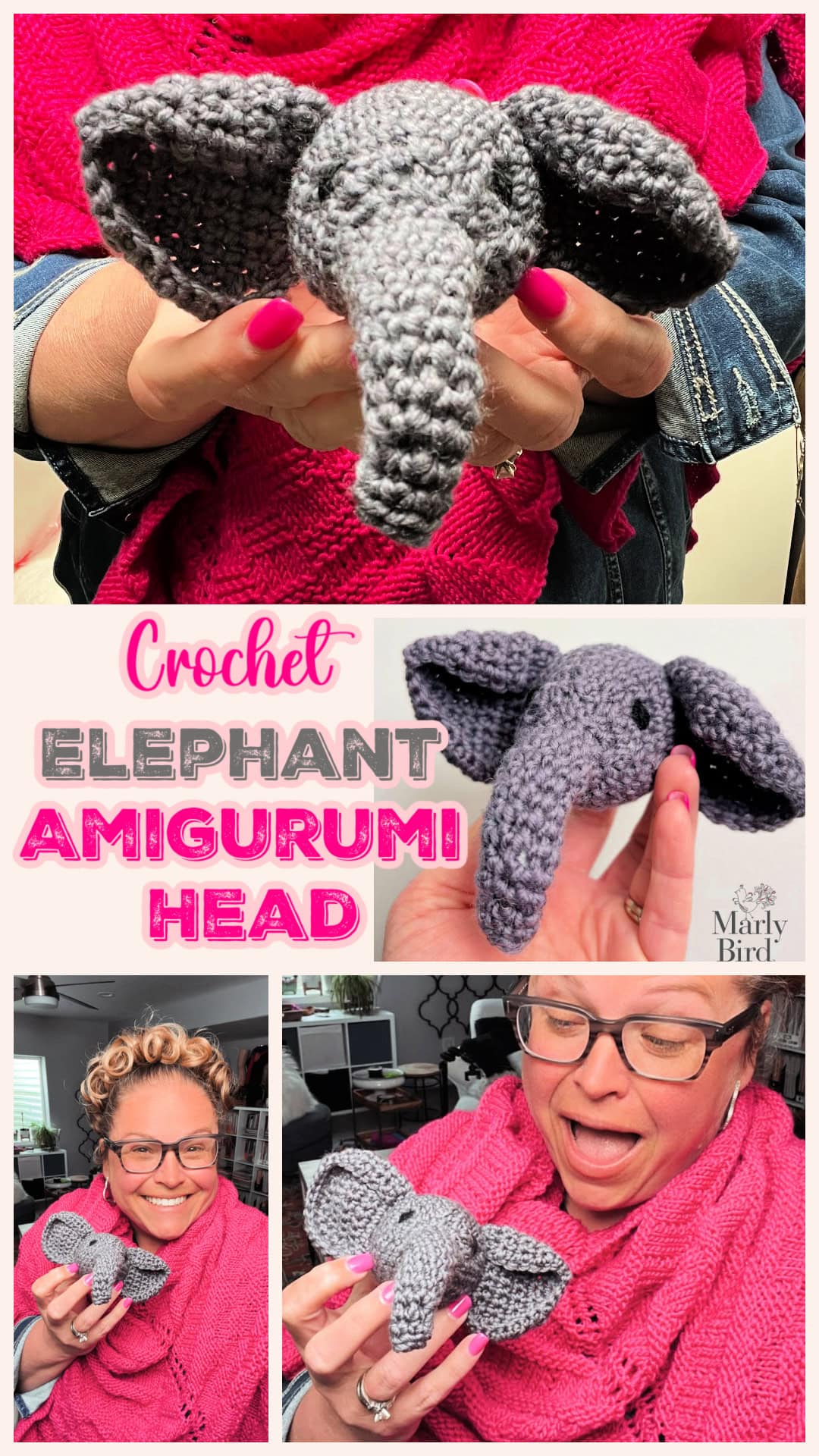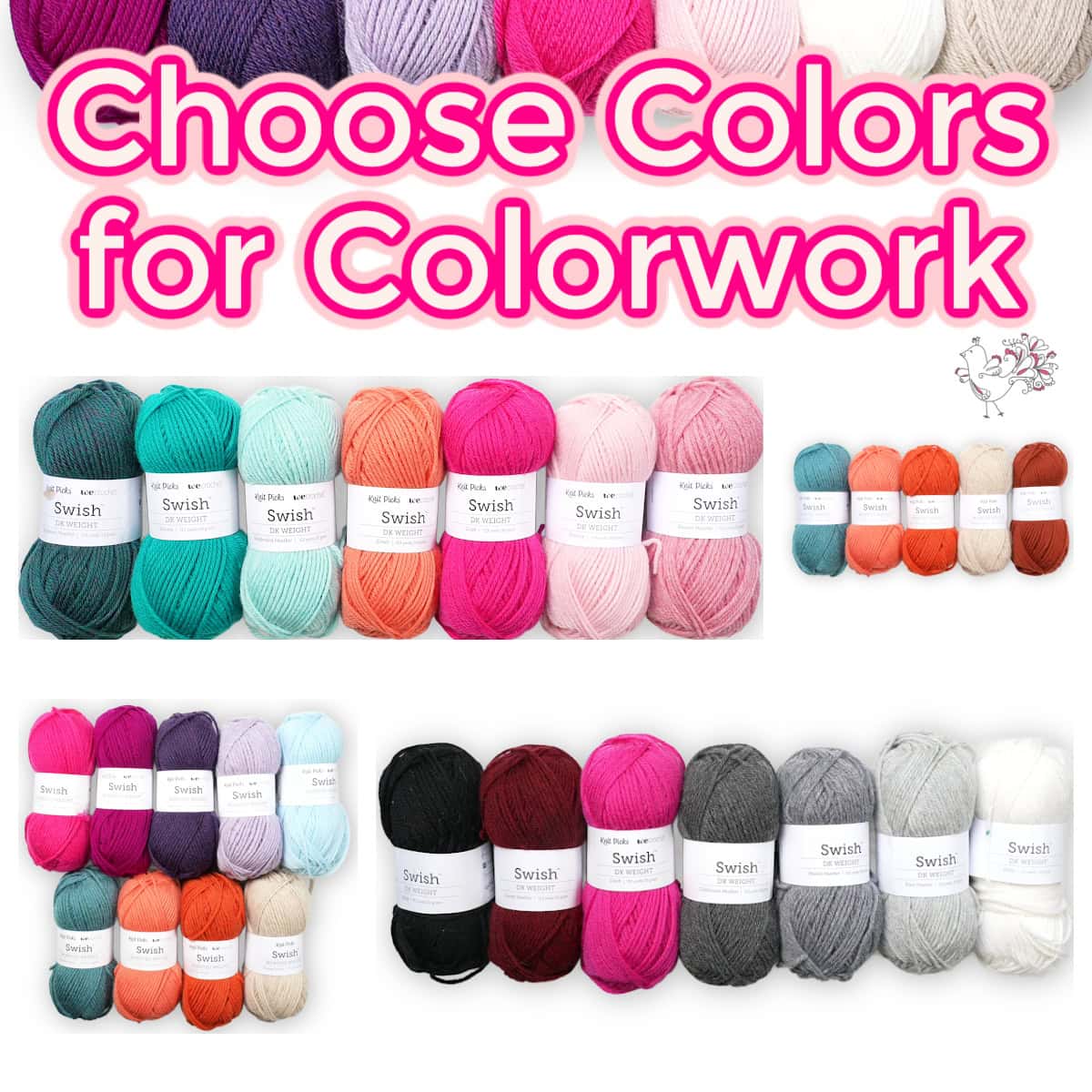Shaping Knits – German Short Rows Or W&T?
What does this even mean? Short rows? You may wonder what I’m talking about if you haven’t come across having to knit short rows yet on your knitting journey. Short rows are a useful tool for your knitter’s arsenal to help shape knit fabric. They come in handy in many situations, which we’ll cover in just a bit. But before we discuss whether to use German short rows or W&T, let’s talk about what they are.

What Are Knit Short Rows?
Short rows in knitting are partially completed rows. You don’t work all the way across. You turn your work mid-row. If you do turn your work mid-row without using certain techniques, you end up with holes or larger-than-usual spaces where you turn. This is usually not what we want, so several short-row techniques have been developed over the years. Probably the most commonly used are German short rows and W&T (‘wrap and turn’).
Why Use Short Rows In Knitting?
The easy answer is that short rows are used for shaping. Likely the most common and historical use of short rows is when turning a heel during the sock-knitting process.
But designers now use short rows to create incredible shawls and other knitwear. They use these shaping techniques to change how and where colors appear in wedges, curves, or feather-like panels. They can make shawls look like wings!
Where Can You Put Short Rows In A Sweater?
There are many places you can use knitted short rows to make garments fit the wearer better than working a straight pattern with no shaping. We’re all made to look different, and shaping in various places can benefit different body types.
Some common places short rows can really help with shaping are:
- Shoulder slope – instead of a stepped bind-off, get a smooth single-row bind-off by working short rows and then binding off all shoulder stitches together.
- Back neck – working top down, knitting short rows across a back neck builds height and makes the garment sit better around the front neck. You’ll see this shaping technique used in the Color Kaleidoscope Poncho Pattern.
- Bust darts – a larger bust sometimes causes the front hemline of a sweater to hang higher than the back. Fix this problem by adding bust darts and working a wedge of extra rows at the bustline, bringing the front and back hems level.
- Curved hem – a popular style right now is the curved hem. Short-row shaping produces curved hems the easy way.
So, How Do You Knit W&T (Wrap and Turn)?
W&T short rows involve using the short row techniques before turning your work. You’ll work to your turning point, move the working yarn forward, slip the next stitch from the left to right needle, return the yarn to the back, then replace the slipped stitch onto the left needle all before turning your work.
Once you reach the W&T on the next row, you’ll need to align the wrap with the slipped stitch and work them together. Check the video to see how this is done on both knit and purl rows.
I demonstrate W&T short rows in this first KAL video for the Color Kaleidoscope Poncho. It’s so much easier to watch than read instructions on how to do it. So, check out the video around 17:40 to see my demonstration and learn about this technique’s nuances.
How Do You Knit German Short Rows?
When you knit German short rows, you work to the turning point. Turn your work first, then bring your working yarn forward between the needles. Pull the working yarn up over the right-hand needle (like you’re always told not to when you first learn to knit), and hold the yarn tightly in place while working the next stitch.
Don’t let this tight stitch drop. It pulls up both legs of the stitch below to form a double stitch (often abbreviated to DS). You’ll work both legs together on the return pass, like a k2tog.
To better understand this technique, watch this video showing a heel turn for My First Toe-Up Knit Socks. Whether you’re using German short rows in socks or sweaters, they’re worked the same way. At 11:40 in this video, you’ll see how to work German short rows. Don’t forget to watch the return pass so you’ll see how to deal with the double stitches.
Which Is Better – German Short Rows Or W&T?
The simple answer here is…whichever you find easiest to work and gives you the best result. There’s no point in sticking with a harder technique just because someone tells you it’s the best. Work with the one that YOU find the best for you.
There are other short-row techniques. I demonstrate another short-row method here in the Shifting Stripes Shawl video. This one is really pretty simple in garter stitch. It’s a simple row turn with no extras. But because the rows on one side stack up, that fills up any hole that might be left. Also, the short row technique I used here results in an awesome ‘how did you do that?’ stripe effect.
Check it out – I think you’ll like it!
And don’t forget to join the Color Kaleidoscope Poncho KAL for all the instructions for this fabulous poncho. That’ll be another…” how did you do that?” moment!
And if you just can’t get enough colorwork…
Check out our colorwork roundup. 65 patterns for your color pleasure.
And if you don’t feel like you can manage those patterns (yet), build your skills with Camp Colorwork.
You’ll find tutorials for several colorwork techniques in BOTH knit and crochet, and they’re all yours FOREVER!










